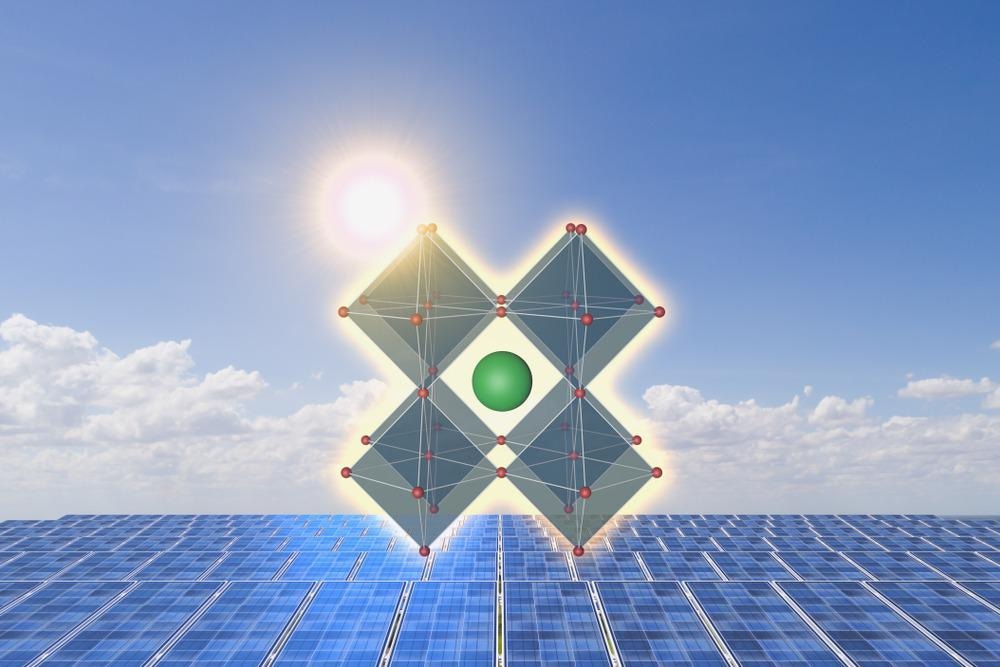An article published in the Journal of Power Sources showed that efficient and stable perovskites can be made for efficient hydrogen liberation in hydroiodic acid (HI) solutions, thus increasing the efficiency of visible photocatalytic hydrogen evolution reaction.

Study: Stable and efficient Ti3C2 MXene/MAPbI3-HI system for visible-light-driven photocatalytic HI splitting. Image Credit: sutadimages/Shutterstock.com
What is a Perovskite?
Perovskite is a semiconductor material that is utilized to carry electric charges whenever light strikes it.
Researchers at Oxford University discovered that perovskite could be employed as a thin-film solar cell substitute. Consequently, perovskite solar cells have become a rising star in the photovoltaics field, attracting a lot of attention from the academic community. Because their operating techniques are still new, there is much room for more study into the fundamental physics and chemistry of perovskites.
Moreover, as has been demonstrated in recent years, advancements in perovskite compositions and production methods have resulted in considerable gains in energy conversion efficiency.
The Importance of Perovskite Solar Cells
Cadmium Telluride (CdTe) for solar cells has been available for more than four decades. However, perovskite solar cells surpassed their efficiency just within the first five years of their inception. Perovskites have also surpassed all other non-concentrator thin-film technologies, such as Copper Indium Gallium Selenide (CIGS). Although more resources and improved infrastructure for solar cell research have been accessible in recent years, the rapid increase in perovskite solar cell efficiency remains large and astounding.
Moreover, the energy utilization of perovskites of photon absorption is nearly 70% while having the potential to have it increased even further and is much cheaper than its counterparts offered in the market, such as silicon solar cells. Thus, perovskites have the potential of becoming inexpensive alternatives for solar cells.
The Major Problem with Perovskites
Long-term stability is currently the most pressing issue within the field of perovskites. This has been proven to be related to degradation pathways, including external elements such as oxygen, light and water, as well as inherent instability caused by the material's features, such as disintegration upon heating.
The photocatalytic hydrogen evolution reaction (HER) efficiency of Methyl Ammonium Lead Iodide (MAPbI3) is hampered by unfavorable charge recombination in the nanoscale region.
Potential Solutions
Generally, several ways for improving stability have been researched; the most successful of which is by altering the component choice. It has been demonstrated that the use of mixed-cation systems, for example, by introducing inorganic cations like caesium or rubidium, improves both efficiency and stability.
Several of the maximum efficiency perovskite cells contain inorganic components, whereas the earliest perovskite cells to achieve more than 15% efficiency employed various types of organic cation systems.
Surface passivation and the combination of 2D-layered perovskites, which have greater intrinsic stability but worse performance, with typical 3D perovskites have also enhanced stability.
Since its inception, these efforts, combined with aspects like greater encapsulation, have dramatically improved perovskites' stability and lifespan and are quite well on their path to matching commercial requirements - with recent research revealing cells capable of withstanding a 1000-hour moist heat test.
New Solution By The Authors
In this study, the authors followed this approach; metallic Titanium Carbide MXene (derived from carbide MAX phases) nanosheets were anchored in situ on Methyl Ammonium Lead Iodide to create an effective and stable MXene/MAPbI3-HI system for the photocatalytic evolution of H2 in the presence of light.
By using a series of opto-electrochemical characterizations, the researchers showed that the exfoliated MXene could swiftly transfer electrons from MAPbI3 to successfully limit charge recombination while simultaneously providing numerous active spots for Hydrogen ion reduction and Hydrogen evolution.
As a consequence, the MXene/MAPbI3 photocatalytic effectiveness of stability and HER rate has been considerably improved, with an exceedingly high HER rate achieved during testing.
By anchoring a 2D electron transporter for improved H2 evolution from Hydrogen I splitting, this work presents a novel approach for developing highly effective MAPbI3-based composite photocatalysts.
Future Implications
Such effective and energy-efficient approaches for stabilizing perovskites will improve its performance even more, thus, reducing cost and making it far more available.
Continue reading: Unravelling the Functional Properties of Phosphorene Nanoribbons.
Reference
Li, H., Lv, X., Li, R., Tao, X., & Zheng, Y. (2022). Stable and efficient Ti3C2 MXene/MAPbI3-HI system for visible-light-driven photocatalytic HI splitting. Journal of Power Sources. Available at: https://www.sciencedirect.com/science/article/pii/S0378775322000313?via%3Dihub
Disclaimer: The views expressed here are those of the author expressed in their private capacity and do not necessarily represent the views of AZoM.com Limited T/A AZoNetwork the owner and operator of this website. This disclaimer forms part of the Terms and conditions of use of this website.